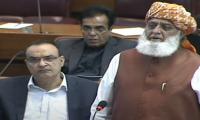The coronavirus has not yet decimated refugee camps or killed displaced people in significant numbers, as I and many others feared in March. To date, only 32,000 of the world’s 26 million refugees have been registered as infected by COVID-19. While this figure is likely lower than the actual number due to weak testing capacity, even if it was tenfold higher, the spread of the virus in the US and many European nations still overshadow it.
Despite this, the pandemic is a much harder blow economically to the world’s 80 million displaced people than for those in affluent societies. Here are three things we got wrong about the coronavirus pandemic, and how they will shape humanitarian work in the year ahead.
When the pandemic began to grip the world in March, disastrous consequences were predicted for overcrowded displacement camps in places such as Bangladesh, the Democratic Republic of the Congo and Greece. Settlements in many of the 30 crisis countries where the Norwegian Refugee Council, my organisation, works are cramped and congested, and social distancing and stringent hygiene measures are often impossible.
Humanitarian activists braced for disaster, but in most places, safe programming and responsible local behaviour have prevented our worst fears from being realised so far. In the world’s largest refugee settlement in Bangladesh, only 356 Rohingya refugees had contracted the disease out of a population of more than 860,000, according to available testing by December. While testing in camps is much lower than in resource-rich western nations, we have also not seen the scale of sickness and death we feared earlier this year based on experiences in the US and elsewhere.
Several reasons point to why. First, families living in camp settings often have limited contact with local populations around them. In many countries, such as Kenya and Myanmar, refugees cannot work, so mix less with people outside. These restrictions prevent much-needed integration in local economies and livelihoods but paradoxically helped prevent the spread of the disease. Many camps also experienced stricter lockdowns than the communities outside them were bound by.
In addition, aid agencies quickly shifted programming to COVID-19 prevention when the pandemic hit. Hand-washing campaigns launched. Water and soap distribution ramped up. Social-distancing messaging rolled out, in so much as distancing was possible. In Congo, our teams distributed aid in large outdoor football fields where people could spread out. Safe programming, delivered by adaptable front-line relief workers, has no doubt saved countless lives.
Eight out of 10 refugees across the world are being hosted by low or middle-income nations that often have weak health, water and sanitation systems. These systems were thought unlikely to be able to support high numbers of displaced people needing support when the pandemic hit. But this has not yet been an issue as the numbers of displaced people infected have remained comparatively low.
Excerpted: ‘What we got wrong about COVID-19 and refugees’
Aljazeera.com
Approximately one in three women worldwide has experienced either physical and/or sexual intimate partner violence ...
Prime Minister Shehbaz Sharif has laid the foundation of a Daanish school in Islamabad’s Kuri Village
Ahfaz-ur-Rahman was also an Urdu poet of considerable reputation with his poems concerning a wide range of political...
In this picture taken on April 16, 2023, people throng a market area during shopping in Lahore. — AFPCare to cast...
A representational image of a transmission tower, also known as an electricity pylon. — AFP/FileLower electricity...
Pakistan's third Governor General Ghulam Muhammad. — National Portrait Gallery website/FileAs discussed in the...







